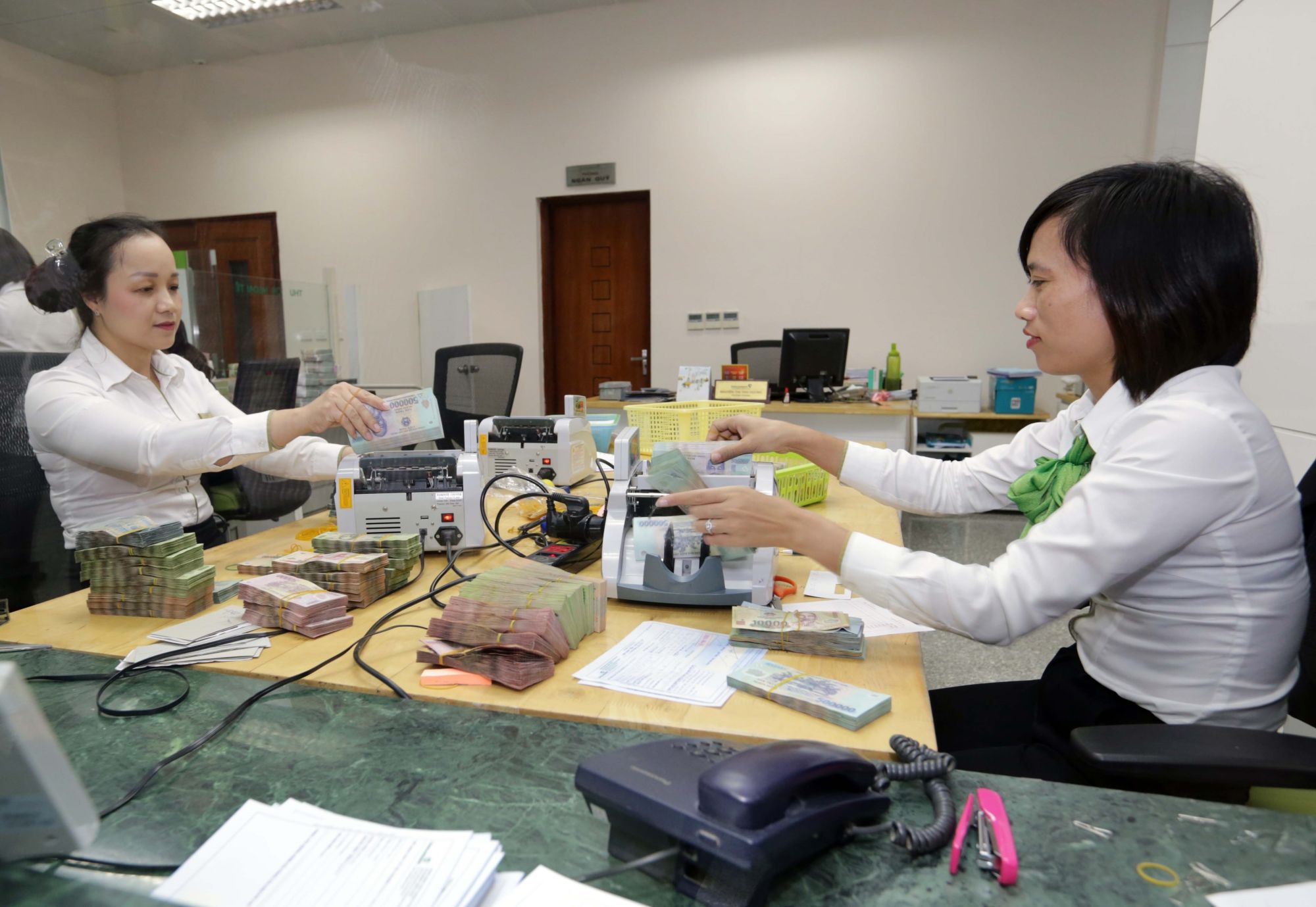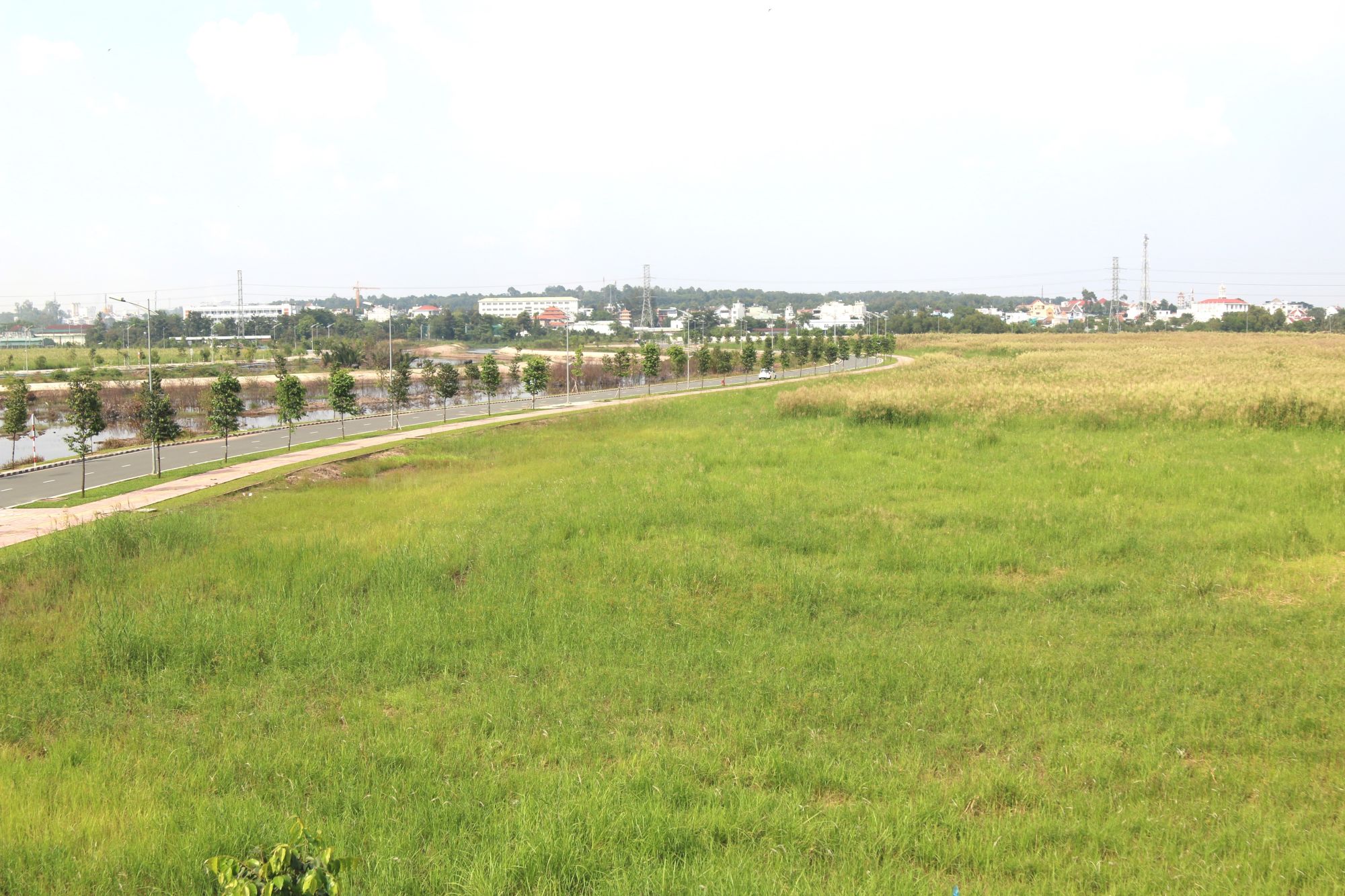Experts have described real estate loans as “the goose that lays the golden eggs” of credit institutions. In the past, massive lending led to overheated credit growth, and many property projects became non-performing loans that were extremely difficult to be dealt with.
To ensure the safe development of each market segment and the economy, the State Bank of Vietnam (SBV) has decided to tighten credit for the property market.
Recently, the central bank issued warnings and requested banks be prudent and have strict lending requirements to minimise risks when providing loans in this field. Accordingly, banks must control the capital flow well to ensure that borrowers use loans for the right purposes.
In fact, the policy on tightening credit for high-risk areas dates back several years ago when the property market was developing strongly. It has been carried out in a larger scale since the beginning of 2018.
The capital-to-risk weighted assets ratio has been changed many times. The ratio for real estate loans used to be set at 100 percent in 2005. It was raised to 250 percent in 2010, and then cut to 100 percent in 2014.
In 2016, the SBV issued Circular No. 06/2016/TT-NHNN, which stipulated that the capital-to-risk weighted assets ratio for real estate loans would be kept at 150 percent until the end of 2016 and later increased to 200 percent as from January 1, 2017.

The tightening of real estate credit is not a temporary move but a long-term trend. It is necessary to develop other capital sources for the property market instead of depending solely on bank loans.
Meanwhile, the maximum rate of short-term capital used to fund medium- and long-term loans would be gradually reduced from 60 percent to 45 percent. In Circular No. 19/2017/TT-NHNN, the SBV set this rate at 40 percent from the beginning of 2019, and raised the capital-to-risk weighted assets ratio for real estate loans from 200 percent to 250 percent.
The maximum rate of 40 percent in short-term capital used to fund medium- and long-term loans should have been applied from 2018, but too fast reduction might cause pressure on banks. Therefore, the SBV decided to extend the time for applying this rate to 2019 so that credit institutions could have more time to prepare.
Banks’ financial reports showed that most of them maintain a rate of real estate loans at 7 percent, a strong decline from the rate of more than 30 percent in 2007 and 2008. Statistics released by the SBV also showed the rate of real estate loans of total outstanding loans in the economy was about 7.5 percent at the end of June 2018, much lower than the 15.8 percent in 2017 or 17.1 percent in 2016.
However, the actual rate of real estate loans remains controversial. In meetings of the National Financial Supervisory Commission, real estate credit hidden in the form of consumer credit was mentioned several times.
Experts are also concerned the decline in real estate credit is a tactic of banks. Loans for house purchases that used to be classified as real estate credit are now defined as consumer credit.
Dr Can Van Luc, a financial-banking expert, proposed loans for house purchases and repairs be separated from consumer credit and classified as real estate credit.
He said the tightening of real estate credit is not a temporary move but a long-term trend. It is necessary to develop other capital sources for the property market instead of depending solely on bank loans.
Echoing this view, Dr Nguyen Tri Hieu said it is crucial to tighten credit for the property market although there could be several unwanted impacts on the market.
“Although that policy could make the property market shrink, the impact is not much, it can even support the settlement of banks’ non-performing loans more actively,” he stressed.
In late October 2018, the Ho Chi Minh City Real Estate Association (HoREA) proposed the SBV permit banks to continue using short-term capital to fund medium- and long-term loans at a maximum rate of 45 percent in 2019.
The HoREA said according to the Law on Real Estate Business, depending on projects’ scale, investors’ ownership capital must account for 15 – 20 percent of total investment capital. The remaining 80 – 85 percent is mainly financed by bank loans and housing buyers.
Additionally, the search for other capital sources from property investment funds and the stock market hasn’t met expectations. Aside from several foreign financial investment funds, there is only one domestic property investment fund in Vietnam with charter capital of only 50 billion VND. As a result, the huge amount of spare money in the country hasn’t been mobilised, and the great demand for capital in the property market remains unsatisfied, the HoREA said.
In contrast, expert Nguyen Tri Hieu said the SBV’s tightening of credit for the real estate and stock markets in 2019 is reasonable.

In 2019, both housing buyers and investors will encounter numerous difficulties in accessing bank loans because of higher interest rates and less capital allocated for real estate.
“Banks should be cautious to help purify the property market,” Hieu recommended.
Sharing the same view, a leader of a commercial bank said the banking sector should not delay or extend the deadline for reducing the rate of short-term capital used to fund medium- and long-term loans to minimise liquidity-related risks and limit banks’ enhancement of lending for the real estate market which could boost risks in banking.
Many property businesses also predicted that in 2019, both house buyers and investors will face difficulties in accessing bank loans because of higher interest rates and less capital allocated for real estate.
The central bank’s tightening of short-term capital used to fund medium- and long-term loans has forced banks to shorten the lists of property projects entitled to loans. Besides this, real estate companies are also switching to the corporate bond channel to mobilise capital for their projects.
In reality, some firms like Dat Xanh have raised capital via bond issuance. Thuduc House is also planning to issue some 300 – 500 billion VND of corporate bonds to mobilise capital and reduce its reliance on bank loans.
Meanwhile, some experts said stocks should be issued by only businesses with good financial capacity, a stable market and high profitability. Small enterprises that lack their own market share, financial statements audited independently or profits are unlikely to succeed in this regard.
“To property businesses, the issuance of stocks is somehow more difficult because most of them are small firms with low ownership capital. Therefore, opportunities are only truly opened up for enterprises with good plans and transparent business activities,” Dr Nguyen Tri Hieu said.
On the other hand, Director of the SBV’s Department of Credit for Economic Sectors Nguyen Quoc Hung said the central bank still encourages loans for good property projects. However, banks are very careful about lending for real estate projects. Many of them have stopped providing loans for land-related projects but still lend to projects that have land use right certificates and good prospects.

The tightening of real estate credit is essential to reduce risks for all parties participating in the market because if investors abuse financial leverage and negative developments appear in project implementation or the market, crises are unavoidable.
Director General of the Orient Commercial Joint Stock Bank (OCB) Nguyen Dinh Tung said his bank is still providing loans for property projects, but it chooses projects carefully and prioritises those with a good profile. Real estate loans only make up 10 percent of the outstanding loans in OCB’s retail banking segment. It is even smaller compared to total outstanding loans of the bank.
A survey of credit institutions showed that facing the abnormal real estate price hike over the past year, many banks raised their lending standards and conducted stricter verification. They supplied loans whose value was not higher than 70 percent of borrowers’ total asset value.
Nguyen Hoa An, a representative of CBRE Vietnam, said many banks are boosting real estate loan rates by 1 – 2 percent and plan to raise more, which will influence the property market as once lending interest rates increase, different investment channels, including investment in real estate, will be affected.
However, it’s obvious the tightening credit for real estate is essential to reduce risks for all parties participating in the market because if investors abuse financial leverage and negative developments appear in project implementation or the market, crises are unavoidable, she added.-VNA
